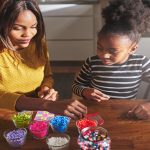Moving to a new home can be something your kids actively participate in. When you invite kids into the process, you transform what could be a stressful transition into an exciting, shared experience filled with learning opportunities. With the following tips, you can make looking for a new home fun for the entire family.
Start With Family Meetings
Before stepping foot on a property, gather everyone for a family brainstorming session. Ask each person what they hope for in a new home. Maybe your teenager dreams of a larger bedroom, while your 7-year-old wants a backyard for the dog. Write down every suggestion, no matter how big or small, to show that everyone’s voices matter in this major family decision.
Create a simple scoring system together, rating features from one to five, based on importance to your family. Is proximity to work more important than a large kitchen? Does the school district outweigh having a swimming pool? Weighing these trade-offs builds critical thinking skills that your kids will need throughout their lives.
Make Property Visits Interactive
Turn each house tour into a detective mission. Give older children clipboards with your family’s priority list, and let them score each property. Young kids can use simple checklists with pictures—a smiley face for features they love, a straight line for “okay,” and a frown for deal-breakers.
Encourage questions during tours. “Why do you think this kitchen layout would work for our family?” or “How would you arrange your furniture in this room?” These conversations help children visualize their daily life in each space and understand how room layouts affect functionality.
After each visit, hold a quick family debrief. What did everyone love? What felt wrong? These discussions teach children to articulate their thoughts and consider different perspectives.
Do a Neighborhood Assessment
When looking for a new home with the entire family, go beyond the house itself. Involve children in evaluating the community where you’ll live. For instance, show them how mail delivery works in different areas. Some neighborhoods have individual mailboxes at each house, while new communities might have cluster mailbox units where residents collect mail from a central location. Explain how cluster mailboxes can be more beneficial than individual mailboxes, as they build community connections when neighbors interact during mail pickup.
Point out other shared amenities like playgrounds, community centers, or walking trails. Ask your kids how they might use these spaces and whether the neighborhood feels welcoming and safe.
Build Decision-Making Skills
The house-hunting process offers countless opportunities to develop your children’s analytical thinking. When comparing properties, create simple pros and cons lists together. Help them understand that perfect homes don’t exist—every choice involves trade-offs.
Let children present their favorite properties to the family, explaining their reasoning. This exercise builds confidence and communication skills while making them feel heard in the decision-making process.
Create Lasting Memories
Years from now, your children will remember feeling valued and included in selecting your new home. Moving becomes less about leaving something behind and more about moving toward something wonderful you’ve chosen as a team.






